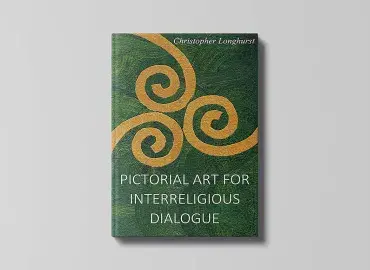Interreligious dialogue is vital to bridging divisions in an increasingly turbulent world, a new guide from the International Dialogue Centre (KAICIID) explains.
The publication, Guide to Interreligious Dialogue: Bridging Differences and Building Sustainable Societies, serves as a roadmap for individuals and organizations working in the field of dialogue and interreligious dialogue.
Examining the uses, methods and benefits of dialogical approaches to societal divisions, the guide is meant as an introduction for interfaith practitioners seeking sustainable solutions to some of the planet’s most pressing problems.
The 72-page illustrated document is intended for religious leaders, members of religious communities and faith-based organizations, policymakers, government ministers and other groups responsible for formulating policy and political agendas.
Accessibly written, the guide will also appeal to individuals unfamiliar with interfaith dialogue but curious to understand more about its potential.
The importance of interreligious dialogue
In theory and practice, dialogue is a proven means of effectively and efficiently shaping positive change. It is a credible approach to finding common ground in fractious situations, and can help de-escalate tensions and avoid conflicts.
Importantly, as the guide explains, dialogue is not debate, discussion or argument. Whereas these are competitive and divisive forms of communication, dialogue is collaborative and transformative.
With regard to interreligious dialogue, this is especially true. As KAICIID’s new publication outlines, the principle objective of interfaith dialogue is to convene people of varied backgrounds, traditions, religions, cultures and identities in a safe and constructive space to discover similarities and celebrate differences.
In doing so, interreligious dialogue can change perspectives and help people see religious and cultural differences as a launchpad for finding solutions to some of the world’s most enduring problems.
According to the guide, interfaith dialogue is particularly effective when stakeholders identify strongly with a religious belief, the issues are perceived to be related to religious differences, and proposed solutions are being hindered by cultural, social or religious divisions.
Interreligious dialogue: needed now more than ever
At present, the world is facing a series of serious challenges. Chief among these are the consequences of COVID-19.
In addition to being a global health catastrophe, the pandemic has precipitated a rise in hate speech, racism, discrimination and xenophobia, experts say.
“Pandemic time is like conflict time,” said Anas Alabbadi, KAICIID’s Deputy Director of Programmes. “Each group tries to protect its own, suspicions about those who are different rise, people tend to simplify the situation by blaming ‘the Other.’”
As pointed out in the guide, the pandemic has also led to a decline in human development, especially in the world’s most impoverished countries. Add in the increasingly harmful consequences of climate change, and it is clear more needs to be done to protect vulnerable communities.
As the majority of nations in the Global South are non-secular, interreligious dialogue has an important role to play. Whether it’s administering healthcare services, providing education, or distributing humanitarian aid, faith-based organizations are vital in developing states. For this reason, interreligious dialogue must be a cornerstone of any process contributing to peace, social cohesion and stability, the guide says.
Interreligious dialogue and policymaking
Guide to Interreligious Dialogue: Bridging Differences and Building Sustainable Societies encourages readers to reach out to their communities, developing cross-cultural connections and fostering cooperation across religious and social boundaries.
This sort of grassroots action is fundamental — but change must also come from the top.
“KAICIID [looks] to elevate and support the field of interreligious dialogue, to bring it from grassroots to the policy level,” Alabbadi said. “Therefore, we focus on building relationships between mid-level society leadership, religious actors and policymakers.”
Reinforcing the point that religious groups must not be overlooked in the policymaking process, the guide reflects on the unique strengths that faith leaders can leverage.
While politicians have the power to establish laws and shape policies that help societies move forward in a more sustainable fashion, religious leaders and faith-based organizations have an unparalleled connection with billions of people. Accordingly, interreligious dialogue is a vital component in building social cohesion and peace, KAICIID’s new publication states.
Interreligious dialogue in action
Drawing on the extensive knowledge of the Centre’s expert team, the guide provides case studies of interreligious dialogue in action. Through these, Guide to Interreligious Dialogue: Bridging Differences and Building Sustainable Societies illustrates the real world challenges facing interfaith practitioners, and how these hurdles are overcome.
A fundamental element of this is the work of facilitators: individuals who guide interfaith participants through the dialogue process, ensuring needs are met and discussions are channelled in the right direction. Having wider support structures in place is equally important, the guide says.
The guide can be accessed here, and for readers interested in developing their interreligious dialogue further, the KAICIID website provides information, knowledge sharing, lessons learned, and free online training.
The International Dialogue Centre (KAICIID) today launched Connect2Dialogue, a…
The Rothko Chapel in Houston, Texas is not necessarily what you think it is. Unless, of course, you thought it was a decidedly…
It is vital that the proper tools and processes are in place to evaluate the outcomes of interreligious peacebuilding and…







